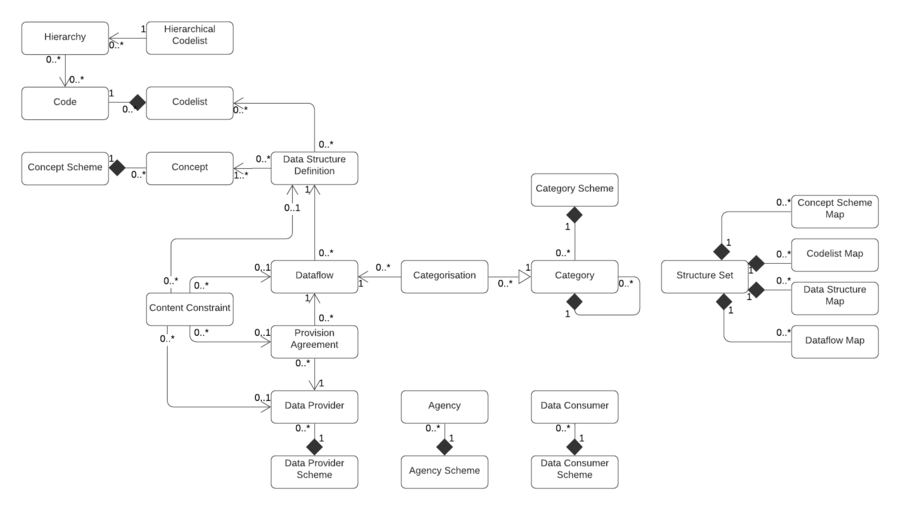SDMX Information Model V10
The SDMX Information model is a data model that specifies the scope of the system in terms of a number of information objects and their contents together with the relationship between the objects as shown in the diagram below.
The version 2.1 model consists of around 17 ‘maintainable’ artefacts such as the Codelist and Data Structure Definition plus other ‘identifiable’ structures such as Code and Concept.
The Dataflow is a pivotal construct in the SDMX Information Model: it is the construct for which data is both reported against, and disseminated against. It makes use of the structural information defined by the Data Structure Definition, but enables for further restrictions to be specified for the allowable content ((Valid) Content Constraint).
The Data Structure Definition (DSD) is a fundamental structure: it defines the valid content of a data set in terms of its dimensionality, variables, concepts, and valid content for the variables (e.g. code list or other data type).
The Provision Agreement contains information about the supply of data by one Data Provider for one Dataflow. In a data collection environment it can contain a link to a Valid Content Constraint that further constrains the allowed values that can be reported by a Data Provider. In a Data Dissemination environment is can link to a Registered Data Source that identifies the location of the data and how it can be retrieved (e.g. SDMX query), and the content of the data source ((Actual) Content Constraint).
Each of the Dataflows can be connected to one or more Categories and any one Category can be connected to zero or more Dataflows. This connection supports data discovery by organised topics such as Demography, Census, Health, Finance.
The model includes a small number of artefacts such as Process and Reporting Taxonomy which are rarely used in practice and, for this reason, are not shown on the schematic.
